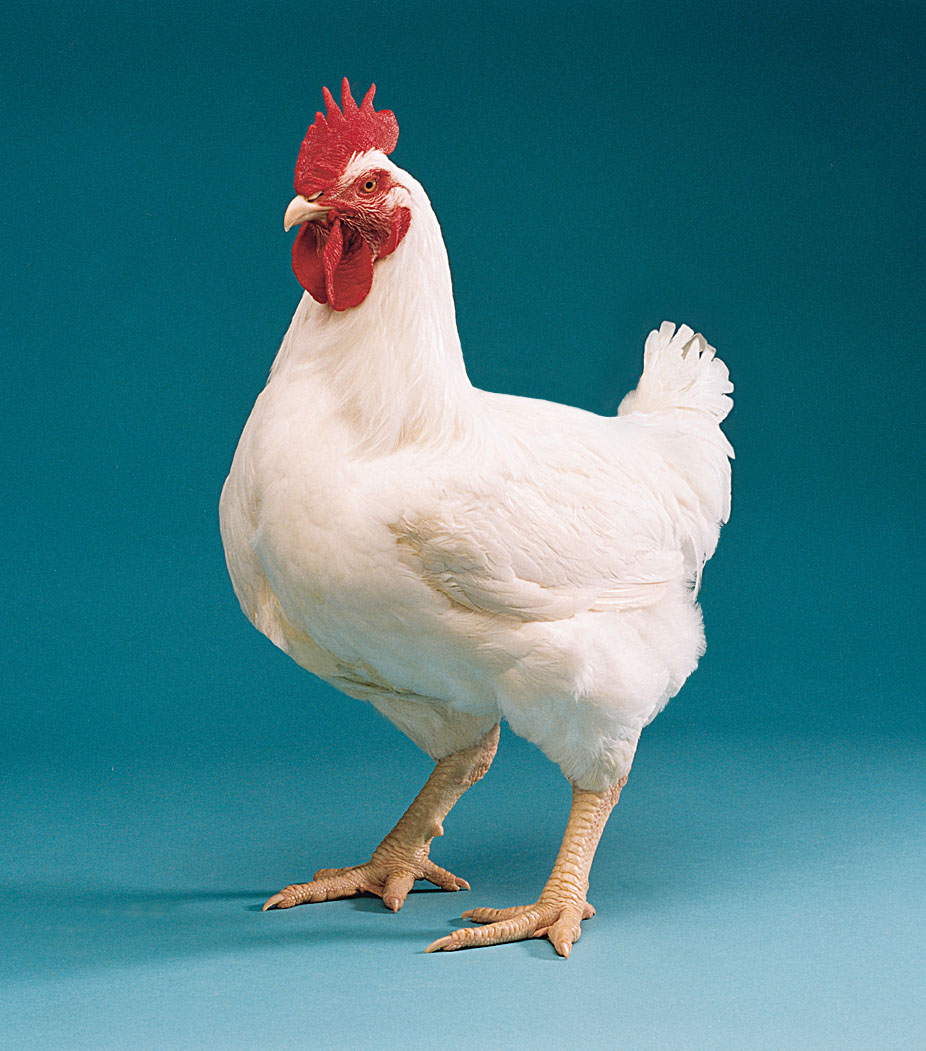
Cobb 700 broiler sets new standard for high yield
The latest breed from Cobb — the Cobb 700 broiler breeder — is aimed at the rapidly expanding demand for breast meat for premium value-added products.
The market is looking for broilers that will grow to heavier weights and achieve a high meat yield, with also the preferred breast muscle profile for the most valuable 'whole muscle' products.
The Cobb 700 has been developed not only to achieve these targets but to maintain the breed's reputation for low feed conversion and low production cost — particularly vital attributes in an era of unprecedented feed price rises.
The challenge of developing this product began more than 12 years ago, and now after research, testing and commercial evaluation the company is this week launching in South America and Europe (Latin American Poultry Congress, Punta Allegra, Brazil, and Fieravicola, Forli, Italy) the Cobb 700, which it believes, will set new standards for the industry.
Enhanced selection to achieve meat yield efficiently up to heavier weights gives the Cobb 700 the advantage of the best overall feed conversion of all high yielding breeds and, particularly important for many markets, the best breast meat feed conversion.
This ratio of the feed required to produce a kg or pound of breast meat is becoming the critical factor in profitably supplying the further processing market. The Cobb breast meat feed conversion is put at 7.868 at 49 days of age and 8.462 at 62 days which, it is claimed, is significantly lower than competitors. Eviscerated yield is now rated at 74.89 per cent, almost 0.5 per cent ahead of the field.
Overall, feed conversion for the Cobb 700 ranges from 1.288 at 28 days to 1.698 at 48 days and 1.972 at 61 days, with bodyweight 1.21 kg (2.660 lb) at 28 days, 2.90 kg (6.400 lb) at 48 days and 3.71 kg (8.169 lb) at 61 days.
"The Cobb 700 is proof that high yielding broilers can still achieve superior performance in the broiler house," says Jay Hughes, Cobb 700 product manager. "Unlike with many breeds, our geneticists have not had to compromise performance in the broiler house to maximize yield. This advantage continues right through the late growing period when the Cobb 700 gains the most weight with the best feed efficiency, setting what will be the new standard for the industry."
During the development phase, the Cobb 700 has benefited from the introduction of roaster-type lines offering more consistent breeder performance with increased carcass and breast meat yield. This is reflected in three key areas:
o Preferred fillet profile: Processors are demanding higher uniformity with a preferred fillet profile to optimise cutting and portioning. Compared with the competitors, the Cobb 700 fillet is longer and more uniform in thickness from shoulder to keel, with a more gradual slope, offering the opportunity to utliize yield more profitably.
o Excellent leg strength: Specifically bred to be grown to heavier weights, the Cobb 700 pure lines are selected 15 per cent later than many other breeds, ensuring good health through to processing and benefiting leg strength and walking ability.
o Good breeder performance: The Cobb 700 produces good egg number for a breed in the high meat yield sector, with the top 25 per cent of flocks achieving 130 chicks / breeder at 60 weeks. Performance is assisted by the Cobb's superior hatchability at this age.
Dr John Hardiman, vice president of research and development, has led the team that has bred the Cobb 700. Several advances in genetics and management have been involved including growing sophistication in ultrasound first used by Cobb almost 30 years ago.
"We have used the latest ultrasound technology to accurately confirm meat yields and evaluate the processing qualities of broilers throughout the product development process," says Dr Hardiman. "But we've also used other advances in genetics and management to achieve yield targets while maintaining the Cobb hallmarks of feed conversion, cost and livability.
"Over the last five years we've continued to make gains in performance through effective trait selection and extensive commercial testing so that we can now offer for the first time a high yield breed that meets the demands of the processors while still achieving great results in the breeder and broiler house."
